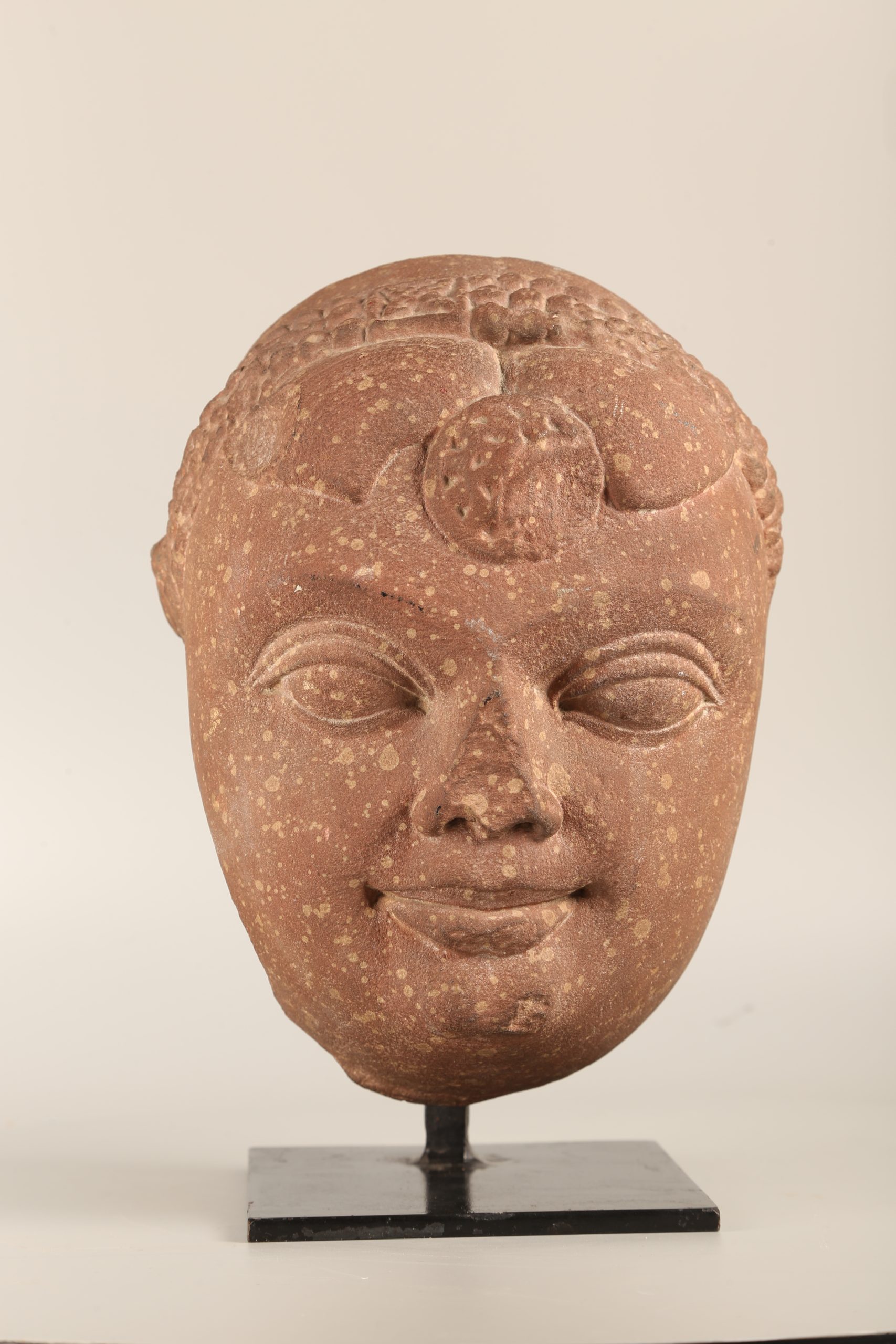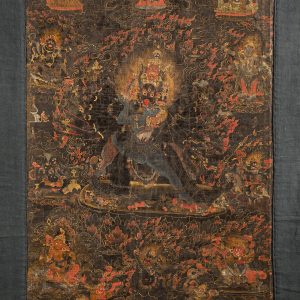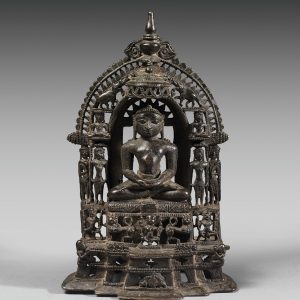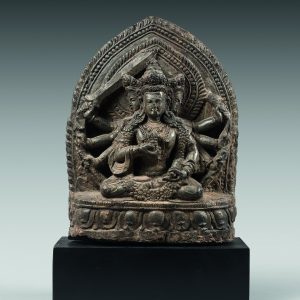Deity Head
16 000,00€
Sandstone
North India, Uttar Pradesh, Mathurā
5th-6th century
H. 22 cm or 9 inch
360° view
Description
The Gupta period (4th – 6th century) is often considered the classical period of Indian art. This head of a deity of great quality is a witness of this Gupta art, the red sandstone very slightly speckled and the style link it more precisely to the Mathurā school.
The brilliant school of Mathurā
Initially a place of pilgrimage in the north of India, the Mathurā region saw the development of an artistic school from the 3rd century onwards which had a flourishing production. The Mathurā school has indeed produced numerous religious sculptures, all of which are made of red sandstone, sometimes speckled. The know-how of the sculptors ensures a great durability to this school, whose production still continues in the medieval period. This sculpture is thus an exceptional witness to the incredible artistic production of the Mathurā school of the first centuries of our era. It flourished first under the Kuṣāṇa rulers, then under the Gupta dynasty.
The Gupta aesthetic, the classical period of Indian art
The Gupta period is often referred to as the “golden age” of Indian art, where humanism triumphs in religious art. Here, the face with its stylized features, with its sober and soft modeling, joins this aesthetic so appreciated. The same is true for the very large, slightly protruding eyes with hemmed and incised contours, which are placed under curved eyebrows. Nevertheless, if the dating corresponds to the Gupta period, we note some resurgences of the Kusana aesthetic. Indeed, given the artistic effervescence that reigned in this region for centuries, the production bears witness to certain reminiscences, such as the full shape of the face or the strongly marked smile.
The very elaborate treatment of the hairstyle is particularly noteworthy. Two strands of hair on either side of the forehead, separated by what appears to be a medallion. The rest of the hair is held back by a beaded headband decorated with stylized floral motifs. Unfortunately, the back of the skull is missing, so the rest of the hair has not been preserved.
The popularity of human images
If the identification escapes us – is it the image of a deity? This enigmatic face nevertheless has the appearance of a mask, the meaning of which seems difficult to detect. Probably part of a temple decoration, the fragmentary nature seems to confirm this hypothesis.
However, this head is the perfect example of an image that effectively combines an accessible human figure with the sublime. The gentle humanity so valued in Gupta sculpture is evident in this finely carved face with slightly petulant lips and full cheeks. One must also admire the noticeably arched eyebrows and the extremely soft modeling.
Provenance : Private French collection, 1980-1990.





